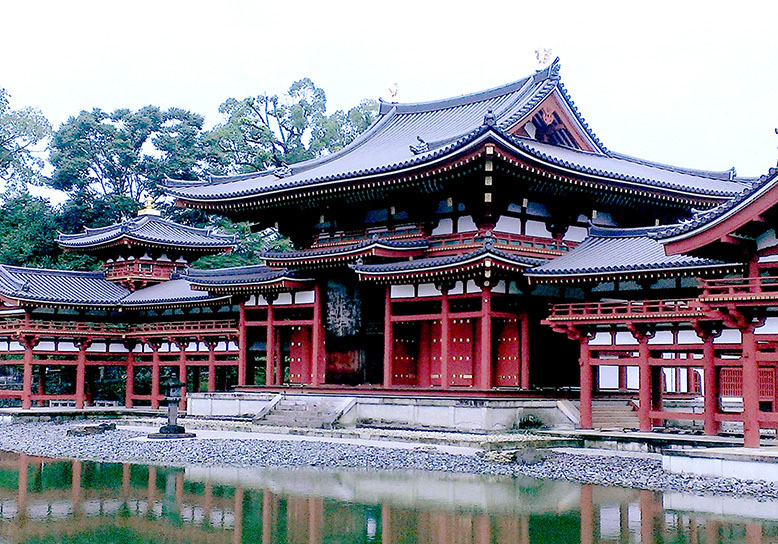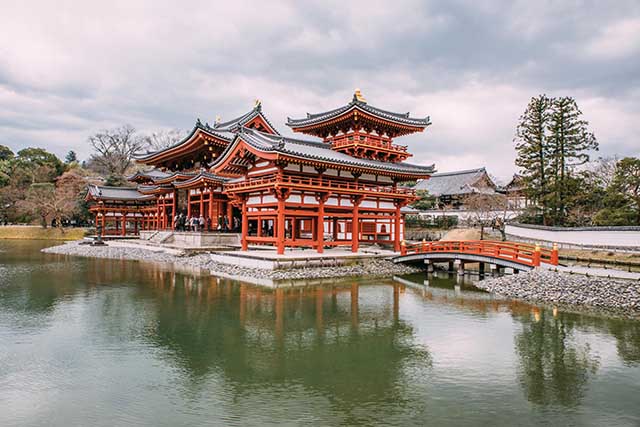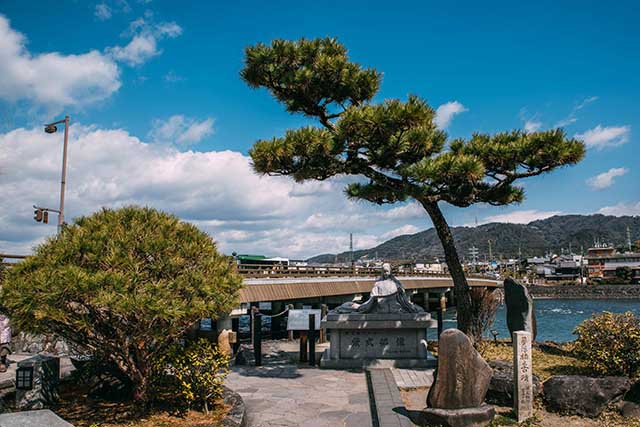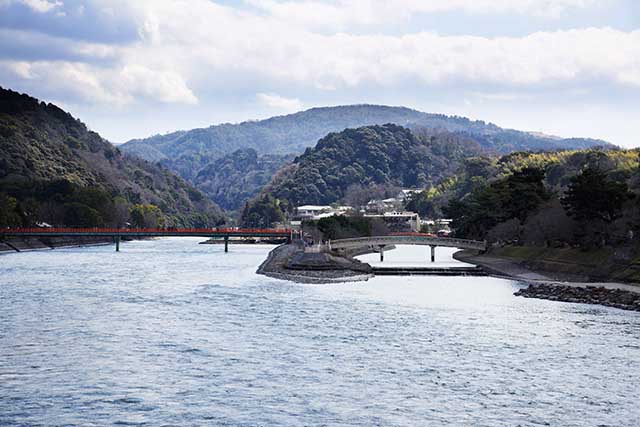Byodoin
A Buddhist temple located in Uji City, Kyoto Prefecture that was founded in 1052 when Fujiwara no Michinaga, the father of Fujiwara no Yorimichi, turned a villa he had inherited into a temple. Due to the pessimism of the time which believed the world was coming to an end, Pure Land Buddhism grew in popularity, and the temple’s hall was designed to recreate the Western Paradise, a key aspect of the faith. The luxurious hall enshrines a seated figure of Amitabha created by the Buddhist sculptor Jocho. Most of the original temple excluding the main hall, Kannon hall, and bell tower were destroyed by fire. In the Byodoin Museum Hoshokan, however, visitors can view a Chinese Phoenix depicted on the ceiling and temple bell (National Treasures) as well as 26 of the 52 floating bodhisattva figures suspended from the ceiling of the main hall.
Spot details
- Address
-
Kyoto Ujishi Uji Renge 116
Map
- Area
- Around Uji Area
- Phone
- 0774212861
- Hours
-
[Garden] 8:30-17:30 (Information desk closed 17:15)
[Museum Hoshokan] 9:00-17:00 (Information desk closed 16:45)
[Visit inside Phoenix Hall] 9:30-16:10 (Reception starts at 9:00, 50 people once every 20 minutes from 9:30) - Closed
- open everyday
- Fees
- [Admission fee(Garden Byodo-in Museum Hoshokan)]Adults600yen, junior and senior high school students400yen, Elementary school students300yen
- Parking Lot
-
Not available
※Fee parking available nearby - Credit Card
- Not available
- Smoking
- Not available
- Wi-Fi
- Available (Kyoto Free Wi-Fi, etc.)
- English Menu
- Available
- Can be enjoyed even on a rainy day
- Yes
- Average budget
- [Lunch] 1-1,000yen
- Estimated stay time
- 60-120 minutes
- Wheelchair accessible
- Available (rental available)
- Infant friendly
- Available
- Pet friendly
- Available (Excluding Museum Hoshokan, Phoenix Hall, Teahouse Touka)
Information Sources: NAVITIME JAPAN
Articles about this spot
Itineraries about this spot
-

- A course through the history of the Heian period in Kyoto and Uji
- 1 day(s)
-

- A Trip Across Japan in 25 Days!
- 25 day(s)
-

- Kyoto Osaka Nara Himeji and Kobe
- 10 day(s)
-

- 12 days: Chiba, Tokyo, Yamanashi, Kanagawa, Shizuoka, Kyoto, Osaka
- 12 day(s)
-

- 22 days: Tokyo, Tochigi, Yamanashi, Kyoto, Nara, Osaka, Hyogo, Hiroshima, Ishikawa, Gifu, Chiba
- 22 day(s)
-

- 16 days: Osaka, Nara, Kyoto, Tokyo
- 16 day(s)
-

- 9 days: Osaka, Kyoto, Aichi, Nara
- 9 day(s)
Review
-
- Nice out of the way stop
- I visited Byodoin Jinja early April 2023. While the cherry blossoms had bloomed early here in UJi a fair amount were still at close to full bloom. In addition there was lovely blooming lavender on...
-
- Beautiful architecture at Byodoin, Kyoto
- Beautiful architecture and cultural heritage. Logistics for visitors are well organized. It takes around 25 minutes by car from downtown Kyoto to go there. Really worth visiting.
-
- Stunning Phoenix temple
- The magnificently proportioned Phoenix temple is a beautiful spot for quiet reflection and observing nature - close to both JR and Kintetsu train stations.
TripAdvisor Traveler Rating
View more







![[Kyoto / Uji City] Japanese culture class ‘Training by a qualified tea ceremony master‘](https://img.activityjapan.com/10/22657/10000002265701_OCJ30vUn_4.jpeg?version=1689165302)










